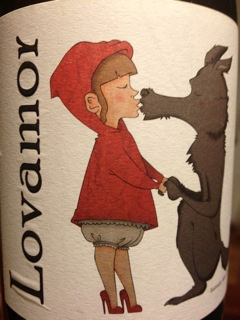When you think about Ribera del Duero, white wine may not be the first thing that comes to mind. In fact, they are not even authorized in the D.O.’s regulations. It’s a region for robust reds produced mainly from tinta fino (tempranillo) and for some more than respectable rosés, wines to chill for an aperitif before the main course of sausages or meats for which this region of Castilla y León is famed.
But in terms of whites, there is nothing. Or, at least, not much. Ever heard of Albillo? It’s the only white variety permitted in the D.O., one that mostly took a backseat in the history of Ribera wine. As Alfredo Maestro explained, growers traditionally planted albillo to blend with tinto fino. “Albillo ripens before tinto fino,” he says. “Producers used it to lend sweetness and ripeness to their reds that, years ago, were harvested earlier, with strong acidity, completely different from the style of wines made today.”


The label stands out in a lineup of Ribera del Dueros, with an illustration of Little Red Riding Hood kissing the Big Bad Wolf. Nor is Lovamor your typical wine: a little cloudy, with flavors that are more like a red. It’s robust, powerful, and at the same time floral and deliciously herbal. “I’m trying to get the most fragrance out of the skins of the grapes, so I let the juice macerate on the skins for about three days,” Maestro says. That maceration not only develops the aroma, but also builds the structure of a wine that can stand up to roast lamb.
On a parallel path, De Blas Serrano produces an albillo from Fuentespina, near Burgos, using vines that are more than 60 years old. Sophie Kuhn, the consulting winemaker for De Blas Serrano, says that the toughest part of making albillo is that there are no models. “Hardly anyone makes it,” she says, “so we don’t really have a clear way forward. But anyway, I love the body, the great structure and the minerality. Her 2009 Albillo aged for more than a year in barriques, but it shows little of the toast of the wood. Instead, it delivers floral, lightly herbal notes that seem to be a marker for the variety, a delicious and unexpected white in one of the reddest regions of Spain.
This is a W&S web exclusive feature.
is the author of Descorchados, an annual guide to the wines of South America, and covers Chile for W&S.
This is a W&S web exclusive. Get access to all of our feature stories by signing up today.
















